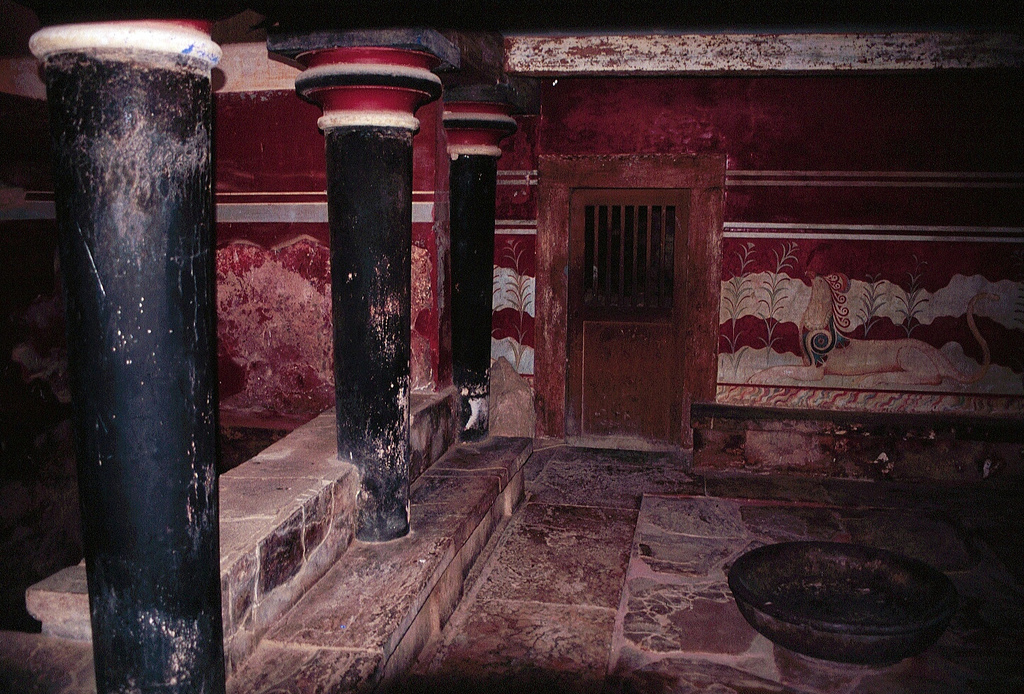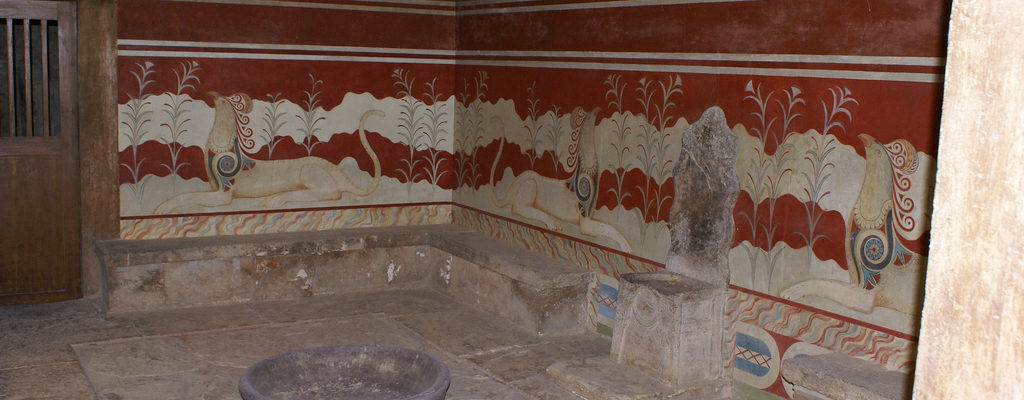An imposing Staircase flanked by porticoes ascended from the South Propylaeum.
A rectangular building to the right of the staircase is thought to have been a Greek Temple of Rhea, which we know from Diodorus to have existed at Knossos. The same Staircase leads to the Tricolumnar Shrine, which is just as it is depicted in the frescoes. It was decorated with a fresco of a sacred marriage.
Behind the shrine and exactly over the West Magazines is the Great Hall used for large gatherings, and to the north of it the Sanctuary Hall, where the famous fresco of the “Parisienne” was found. A light-well above the Throne Room comes out on a ter¬race, where copies of the frescoes are displayed. A staircase at the north end of the ter¬race leads to the groundfloor.
On the groundfloor are the Ante-room and Throne Room. The Ante-room is entered through a set of four piers-and-doors. On the north side of the Throne Room is the gypsum throne with a bench on either side, and behind the throne a pair of griffins, its guardians. The sacred character of the room is evident from the “lustral basin” opposite the throne.

© Photo credits by Tyler Bell under CC-BY-2.0
The squat alaba¬stron-type of vases found on the floor show that a ceremony to propitiate the deity was in progress at the moment of the destruction.
There is a Stepped Porch south of the Throne Room with 12 steps and two columns in line on the steps to sup¬port the roof. South of and lower than the Stepped Porch, Cist-shaped Crypts lined with lead were found, which contained the faïence snake goddesses. These were the Temple Repositories. Directly south of the Stepped Porch the Tripartite Shrine fronts onto the Great Court. This type of shrine is well-known from the miniature frescoes. It is shallow in depth.
A fine large pithos is preserved behind its west wall. South of the Tripartite Shrine steps lead down to a paved area which was the Ante-room of the Pillar Crypt, a hypostyle chamber where sacrifices took place.
The pillars, with double-axes carved on them, have the character of “baetyls”, sacred stones that were abstract re¬presentations of the deity. Behind these compartments, on the other side of the long corridor, are the 18 West Magazines.

Do you want to know more about Crete and the history of Greece?
Check out our guidebook to Ancient Greece, with detailed history and Past & Present images of the Acropolis, the Parthenon, Crete and all the greatest historical and archaeological sites of Ancient Greece.

